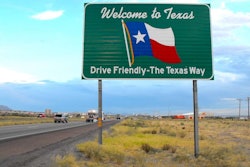
State DOTs face many challenges ahead – especially as pressure rises on existing capacity while funding to keep the transportation network “ship-shape” shrinks, according to the American Association of State Highway and Transportation Officials (AASHTO).
“We like to talk about traffic congestion as an issue, but it is actually a symptom of a larger problem – and the problem is we don’t provide affordable housing and transportation solutions,” according to Roger Millar, secretary of the Washington Department of Transportation.
His comments came during a keynote speech at AASHTO’s 2018 Joint Policy Committee meeting in Spokane, Washington, on July 18.
“We have a rich list of transportation options for the rich that can afford to live in our cities – the rest are forced to drive. And they drive vehicles that often can’t make the trip,” Millar says, due to the poor condition they are in, the AASHTO Journal reports.
In Washington state, he points out, family after family is finding out that the only house they can afford is miles away from where they work. “And we have 50 incidents a day on Interstate 5 where cars and trucks are breaking down – vehicles that should not be on road but are. Executive housing and Walmart jobs is not a housing solution – that only puts more people on road.”
Millar stresses that that managing demand on the system is the key. “Simply put, we cannot build our way out of congestion,” he says.

Roger Millar, secretary of the Washington Department of Transportation.
“Our biggest source of capacity in the system is reducing demand; getting more people to telework, travel at off-peak hours, and by making off-system travel improvements such as adding bike lanes changes demand on system. That way we add capacity but only where it makes sense.”
He says one technology is helping WSDOT “better manage our concrete; we can move 30 percent more people via the same pavement with express toll lanes. So we must consider that before expanding the highway.”
Millar – who serves as the chair of AASHTO’s special committee on freight – stresses that building more highway capacity to solve congestion issues “isn’t the answer” for his state largely due to the expense and the fact that Washington’s gas tax revenues are in the main going to pay for bonds that funded previous infrastructure projects, the article says.
“We have the second highest gas tax in the country” with the state’s levy at 49.4 cents per gallon, Millar notes. “We have better than doubled the gas tax since 2000. But what concerns me with all that money is that it pays off bonds. By 2027, about 71 percent of the gas tax will be going to pay off bonds – so we’ll be sending the bulk of the gas tax to the bank.”
Building more capacity is fiscally out of the question, he says.
“We asked ourselves, what would it cost to solve traffic congestion? To be able to drive 60 miles per hour on the interstate whenever we wanted to? We found out it would cost $115 billion, or a $2.20 to $2.50 per gallon increase in the gas tax,” Millar also says in the AASHTO Journal article.
Another issue is improving transportation system safety, especially when it comes to roadway fatalities, he points out.
“We accept death on the highway as a cost of business – that is appalling,” Millar noted. “Look at the cost of that. Congestion costs us $2 billion to $5 billion, but (roadway) fatalities and accidents have over $8 billion in impact. So safety is a bigger cost issue for us, yet is the smallest of our programs.”
In the end, “being willing and able to take some risks” and working together will be critical for state DOTs to tackle future challenges, he says.
Millar’s comments came as the lead-in to a panel discussion among state DOT CEOs. To read the full AASHTO Journal article, click here.











